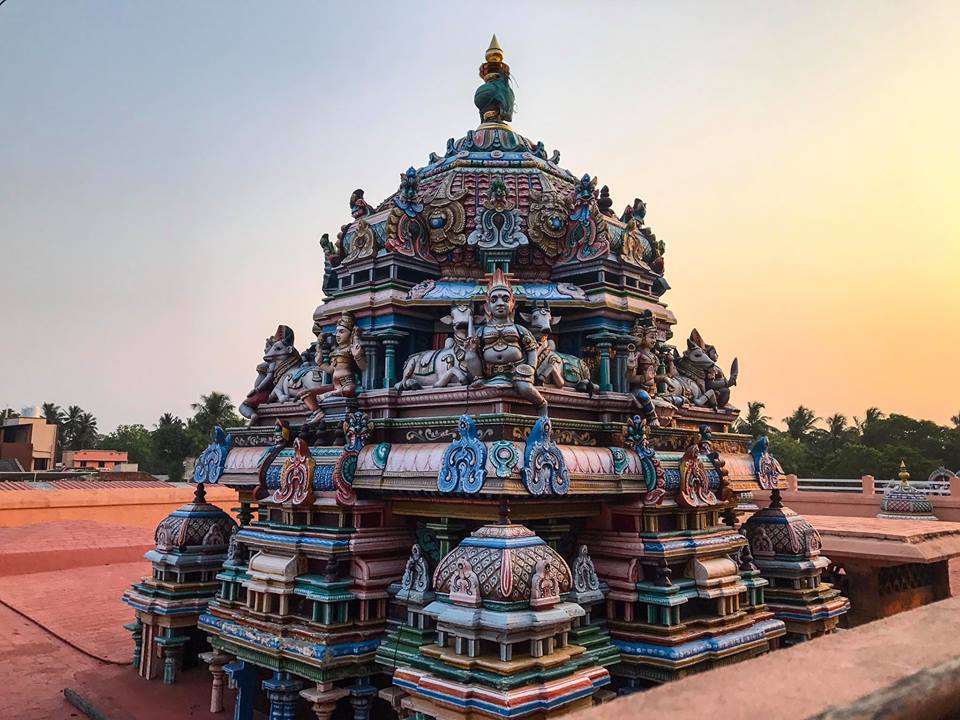
Kanchipuram : The Land Of Faith And Silk

India is a land that throbs with devotion. We wake to the sound of tolling bells and mass prayers, the air breathes in the smell of camphor and incense sticks. In this land, under the Hindu culture, there are seven holy tirthas or pilgrimage centers known as the Sapta Puri (Sapta meaning Seven and Puri meaning Towns). These pilgrim centers are believed to be the incarnation places of different Gods, also known as avatars, who descended. Of those seven holy places, one is South India's very own The City of Thousand Temples—Kanchipuram, located 72 km from Chennai.
The Name And The History
Kanchipuram is named after Kanchi trees that bear Kanchi flowers or blossoms. The sweet fragrance these flowers possess is considered as Amirtham, the holy food of the Gods. Ancient Tamil literature describes that the branches of this tree shimmered like gold, while the leaves mirrored emerald and the fruits glistened like the navaratna, the auspicious order of the nine gems. The fragrance of these flowers filled the city of Kanchipuram, their birthplace and it mesmerized everyone. The Mummoorthis, enticed by the redolence of the Kanchi flowers came down to this place and began their staunch dhyana, a set of meditation prayers, to Gods and they were granted their desired boon. And hence, this place got its name Kanchi Devapuram. Over time, the holy name got corrupted into Kanchipuram.
The term Kanchi also have two different meaning in Tamil and Sanskrit. In Tamil, the word is split into two 'Ka' and 'anchi', where ‘Ka’ means Brahma and ‘anchi’ refers to worship, indicating to the place Kanchi where Lord Brahma worshipped Lord Shiva. In Sanskrit, the term Kanci means girdle, symbolizing that this city is like a girdle to the earth.
Sources from early Tamil literature give different names for this city. The earliest seems to be Kanchi. The other names referred are Kamakottam, Pralaya Sindhu, Shivapuram, Brahmapuram, Thapomayam, Bulokakailasam, and Satyavratakshetram.
The City And Its Temples

Palar River dawning from Karnataka is the central river that passes through Kanchi, which is later joined by the Vegavathi River and the Cheyyar River. Kanchipuram is divided into, Shiva Kanchi or the big Kanchi constituting most of the Shiva temples and on its east is the Vishnu Kanchi or the small Kanchi, with the utmost of Vishnu temples. This "City of Thousand Temples", though not literally, has 108 Shaiva temples, 18 Vaishnava temples and a total of around 150 magnificent rock-cut temples.
Pancha Bhoota Stalam
The Pancha Bhoota Stalam or the land of five elements refer to five Shiva temples each drawing the indication of the five prime elements of nature—land, water, air, sky, and fire. One of which is in Kanchipuram where Lord Shiva is believed to be manifesting the earth in the Ekambareswarar Temple.

Legend says...
...One day when Parvathi was playing with Shiva she closed his eyes for fun and the entire universe turned dark. Shiva, who got angry by this act, punished Parvathi by sentencing her to be born on earth. She then chose a place near Kamba river to worship Lord Shiva by placing an idol of linga made of mud under the Ekamba tree. She continued her prayer for a long period and one day, a flood hit the town. When the people were racketing and the whole town was drowning Parvathi embraced the linga to protect him from dissolving in the flood and continued her prayer. Shiva who was pleased with her devotion agreed to marry her.
And till day, there is only one Amman shrine for all Shiva temples within Kanchipuram at the Kamakshi Amman temple, indicating her sole presence in Kanchi. Hence the name, Aadhi Sakthi peetam.
The Unsolved Mystery
Four of the five Pancha Bhoota Stalam temples are in Tamil Nadu and one is located in Andhra Pradesh. In those, the Chidambaram Nataraja temple, Kanchipuram Ekambareshwar temple in Kanchipuram district and Sri Kalahasti temple in Andhra Pradesh are found to be located in linearity. Constructed in a time where there were no scientific means and satellite facilities, it is still a mystery of how the builders were able to construct the three majestic temples in the same longitudes at 79 degrees 42 minute east.

The mystery further intensifies when almost eight of Shiva temples from Kedarnath to Rameswaram lie around 79° E 41’54” Longitude. It is also discussed that a lot of other Shiva temples which might be gone to dust in time might have also laid in the same line.

|
S.No |
Place |
Temple |
Longitude & Latitude |
|
1. |
Kedarnath |
Kedarnath Temple |
30.7352, 79.0669 |
|
2. |
Kedarnath |
Kaleshwara Mukteswara swamy Temple |
18.8110, 79.9067 |
|
3. |
Srikalahasti |
Srikalahasti Temple |
13.749802, 79.698410 |
|
4. |
Kanchipuram |
Ekambareswarar Temple |
12.847604, 79.699798 |
|
5. |
Thiruvanaikaval |
Jambukeshwara Temple |
10.853383, 78.705455 |
|
6. |
Tiruvannamalai |
Annamalaiyar Temple |
12.231942, 79.067694 |
|
7. |
Chidambaram |
Nataraja Temple |
11.399596, 79.693559 |
|
8. |
Rameswaram |
Ramanathaswamy Temple |
9.2881, 79.3174 |
The Birth Of Silk In Kanchi
Pallava Dynasty built and designed the city Kanchipuram and named it their capital. After that, a lot of dynasties took over Kanchi but they didn't last long. In Kanchi, where temples were built in each street, rituals and ceremonies became a part of their daily activity. This also marked the importance and demand for silk to offer the Gods and wear during functions. It was during the reign of Krishna Devaraya two major weaving communities the Devangas and Saligars migrated to this city from Andhra Pradesh. Legends also state that the Kanchi silk weavers are descendants of Sage Markanda, the master weaver of Gods. It is now a history of how silk sari and Kanchipuram have become a hand in glove.
The Heart Of Saris
Art is more of a mindset than a profession. The weavers of Kanchipuram weave their city's heart into saris—the scriptures and art of their temples. From the traditional Kanchipuram silk sari with the chakra motif in the mango yellow base with the golden temple zari border raising in the edges to the floral weave pattern alongside the triangular or zigzag temple motif bordering the six-yard silk will make you find the Goddess residing in your heart and actions.

Sarangi houses a range of authentic sarees featuring the temple motif. Click here to buy yours!
#sarangithestore #Kanchipuram #temple #silk #weaving #history #incredibleindia #handloom #textiles
